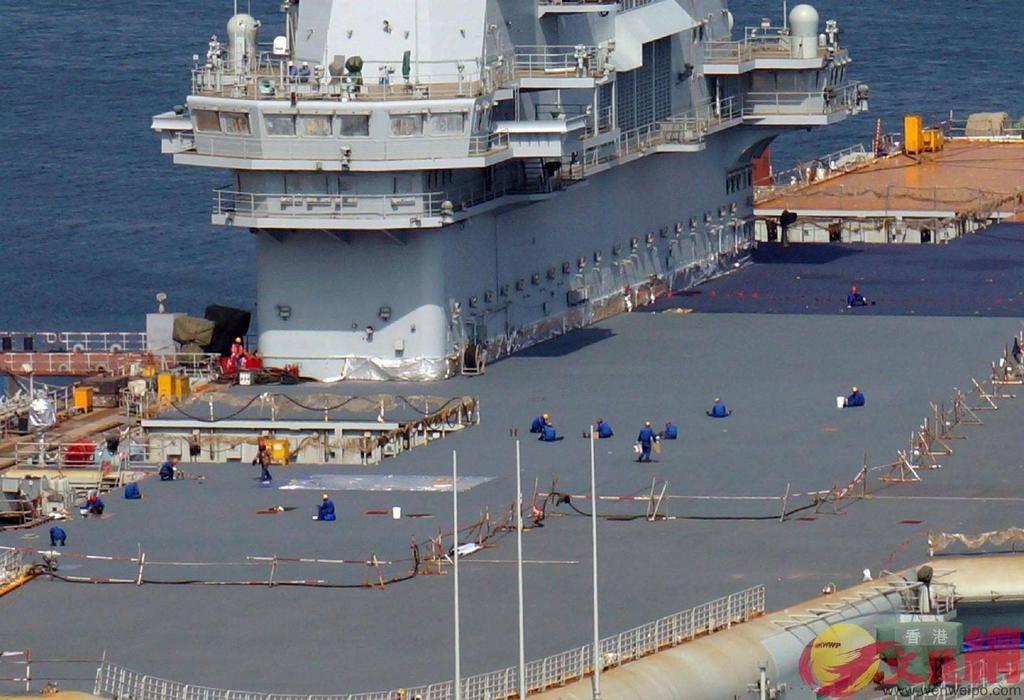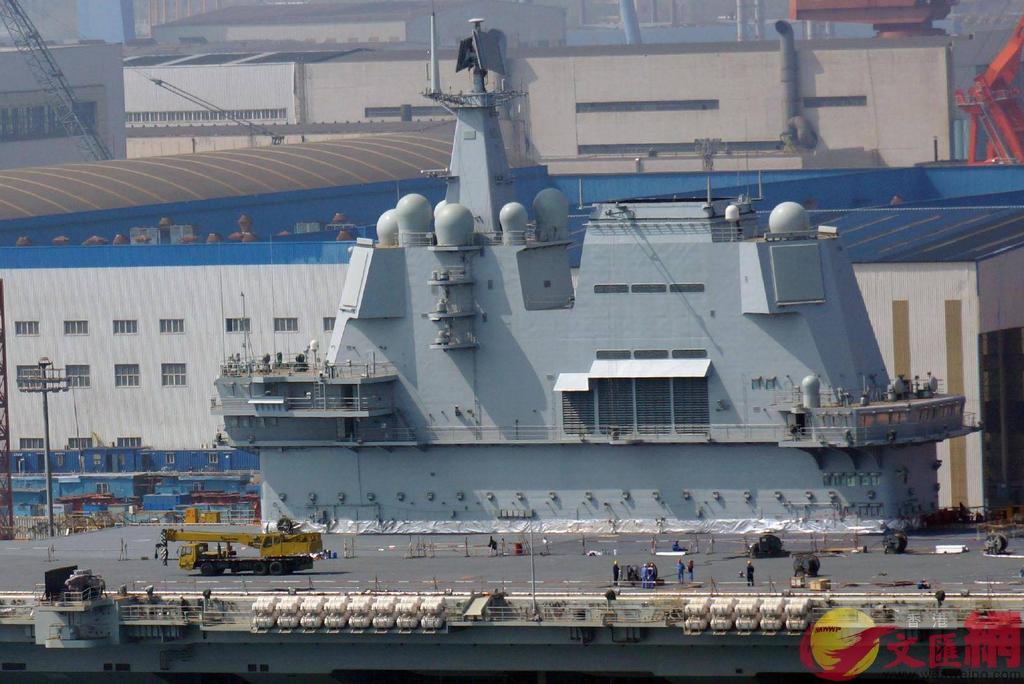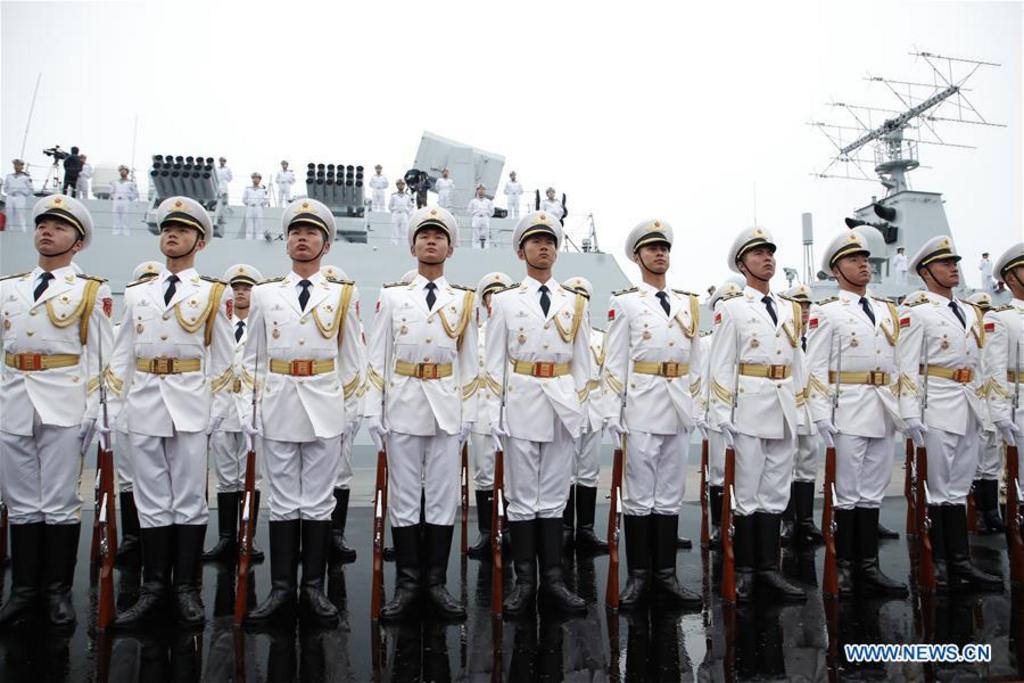China Confirms Submarine-Launched Missile Test
JL-3 is Beijing's newest nuclear missile capable of ranging US

Chinese JL-3 Missile Launch
View attachment 8669
China's Defense Ministry this week confirmed the test firing of a new submarine-launched ballistic missile the Pentagon regards as a strategic weapon capable of striking anywhere in the United States from underwater launch points.
Asked about the test of the new JL-3 submarine-launched ballistic missile, Sr. Col., Ren Guoqiang, a Defense Ministry spokesman, acknowledged the test firing.
"It is normal for China to conduct scientific research and tests according to plan," Ren said during the monthly press briefing.
"These tests are not targeted against any country or specific entity," he said. "China follows a defense policy which is defensive in nature and an active defense military strategy, and our development of weapons and equipment is to meet the basic demand of protecting China's national security."
American defense officials disputed the Chinese claim that the test was not targeted at any country and said the missile firing on June 2 coincided with the visit to Asia by then-acting defense secretary Patrick Shanahan.
The test was reported by the Washington Free Beacon on June 13.
Shanahan spoke at a defense conference in Singapore where he indirectly identified China as "the greatest long-term threat" to the vital interests of states in the region for undermining the rules-based international order.
China is engaged in destabilizing actions, what Shanahan termed "a toolkit of coercion," including the deployment of advanced weapons in militarizing disputed areas and threatening to use force to compel rivals.
China also is engaged in influence operations to interfere in the domestic politics of other nations, undermine the integrity of elections, and threaten internal stability. Predatory economics are another feature of Chinese malign activities, along with state-sponsored theft of military and civilian technology.
Shanahan declared that Chinese behavior "that erodes other nations' sovereignty and sows distrust of China’s intentions must end."
Ren's confirmation of the JL-3 was a rare public confirmation of one of the People's Liberation Army's most secret military programs.
American officials said the JL-3 was launched from a submarine test platform in the Bohai Sea and flew several thousand miles to a missile impact range in western China.
Adm. Philip Davidson, commander of the Indo-Pacific Command, said in February that the new JL-3 is being developed for a new class of ballistic missile submarines. The four-star admiral said the JL-3 is part of a strategic nuclear modernization program that is adding new capabilities across the spectrum of nuclear forces.
"China's third generation Type 096 nuclear-powered ballistic missile submarine will be armed with JL-3 sea-launched ballistic missiles and will likely begin construction in the early-2020s," Davidson said.
Other new strategic missiles include the new road-mobile DF-26 intermediate-range missile and the new DF41 ICBM.
Rick Fisher, a China military expert, said the disclosure by regime is an example of Beijing practicing "transparency concerning nuclear and missile issues only under duress."
"One conclusion that can be drawn is more official U.S. revelations of Chinese missile tests will force greater transparency on the Chinese Communist dictatorship," said Fisher, a senior fellow at the International Assessment and Strategy Center.
"There is a great deal of information about Chinese military developments that the U.S. intelligence community should keep classified, but consideration should be given to revealing more about missile tests," he added. "Many of these are weapons that China is developing to destroy the democracy in Taiwan, to attack U.S. military forces in Japan and to attack U.S. allies like Japan and South Korea. American citizens deserve to know of this growing danger as do our allies in Asia."
Trump administration officials said earlier this month that the United States would seek to include China in future strategic arms talks aimed at limiting nuclear forces. Chinese officials so far have flatly rejected U.S. appeals.
White House National Security Adviser John Bolton said in a June 18 interview that the concept of bilateral U.S.-Russian arms talks is outdated.
"Cold War style, bilateral strategic arms negotiations don't make sense when you're in a multipolar nuclear world," Bolton said.
Agreements between the United States and Russia, such as the 1987 Intermediate-Range Nuclear Forces Treaty that Moscow later violated, limited Washington and Moscow but not Beijing.
"The whole point is to find a way, whether it's in a trilateral negotiation, or maybe you could consider even more nuclear powers involved," he said. "But looking at this as a bipolar nuclear world when it's manifestly a multipolar nuclear world is just conceptually completely backward."
Bolton noted China's reluctance to join arms talks but said the effort should be made because the risks of nuclear arms proliferation spreading to other nations is growing.
The JL-3 is expected to have a range of more than 7,000 miles and likely will be equipped with multiple, independently targetable reentry vehicles.
The June 2 test was the second flight test of the JL-3. The first test took place in December.
The U.S.-China Economic and Security Review Commission stated in one of its recent annual reports that the JL-3 is designed to be more lethal and accurate than the JL-2, the current SLBM. The commission said the JL-3 "will be capable of striking the continental United States from China's periphery."
Ren, the Defense Ministry spokesman, also criticized the Pentagon's recently published Indo-Pacific Strategy that identifies China as a strategic competitor.
"No strategy should go against the times," Ren said. "The trend of the world is mighty and overwhelming. Those who follow it will prosper while those who resist will perish."
JL-3 is Beijing's newest nuclear missile capable of ranging US

Chinese JL-3 Missile Launch
View attachment 8669
China's Defense Ministry this week confirmed the test firing of a new submarine-launched ballistic missile the Pentagon regards as a strategic weapon capable of striking anywhere in the United States from underwater launch points.
Asked about the test of the new JL-3 submarine-launched ballistic missile, Sr. Col., Ren Guoqiang, a Defense Ministry spokesman, acknowledged the test firing.
"It is normal for China to conduct scientific research and tests according to plan," Ren said during the monthly press briefing.
"These tests are not targeted against any country or specific entity," he said. "China follows a defense policy which is defensive in nature and an active defense military strategy, and our development of weapons and equipment is to meet the basic demand of protecting China's national security."
American defense officials disputed the Chinese claim that the test was not targeted at any country and said the missile firing on June 2 coincided with the visit to Asia by then-acting defense secretary Patrick Shanahan.
The test was reported by the Washington Free Beacon on June 13.
Shanahan spoke at a defense conference in Singapore where he indirectly identified China as "the greatest long-term threat" to the vital interests of states in the region for undermining the rules-based international order.
China is engaged in destabilizing actions, what Shanahan termed "a toolkit of coercion," including the deployment of advanced weapons in militarizing disputed areas and threatening to use force to compel rivals.
China also is engaged in influence operations to interfere in the domestic politics of other nations, undermine the integrity of elections, and threaten internal stability. Predatory economics are another feature of Chinese malign activities, along with state-sponsored theft of military and civilian technology.
Shanahan declared that Chinese behavior "that erodes other nations' sovereignty and sows distrust of China’s intentions must end."
Ren's confirmation of the JL-3 was a rare public confirmation of one of the People's Liberation Army's most secret military programs.
American officials said the JL-3 was launched from a submarine test platform in the Bohai Sea and flew several thousand miles to a missile impact range in western China.
Adm. Philip Davidson, commander of the Indo-Pacific Command, said in February that the new JL-3 is being developed for a new class of ballistic missile submarines. The four-star admiral said the JL-3 is part of a strategic nuclear modernization program that is adding new capabilities across the spectrum of nuclear forces.
"China's third generation Type 096 nuclear-powered ballistic missile submarine will be armed with JL-3 sea-launched ballistic missiles and will likely begin construction in the early-2020s," Davidson said.
Other new strategic missiles include the new road-mobile DF-26 intermediate-range missile and the new DF41 ICBM.
Rick Fisher, a China military expert, said the disclosure by regime is an example of Beijing practicing "transparency concerning nuclear and missile issues only under duress."
"One conclusion that can be drawn is more official U.S. revelations of Chinese missile tests will force greater transparency on the Chinese Communist dictatorship," said Fisher, a senior fellow at the International Assessment and Strategy Center.
"There is a great deal of information about Chinese military developments that the U.S. intelligence community should keep classified, but consideration should be given to revealing more about missile tests," he added. "Many of these are weapons that China is developing to destroy the democracy in Taiwan, to attack U.S. military forces in Japan and to attack U.S. allies like Japan and South Korea. American citizens deserve to know of this growing danger as do our allies in Asia."
Trump administration officials said earlier this month that the United States would seek to include China in future strategic arms talks aimed at limiting nuclear forces. Chinese officials so far have flatly rejected U.S. appeals.
White House National Security Adviser John Bolton said in a June 18 interview that the concept of bilateral U.S.-Russian arms talks is outdated.
"Cold War style, bilateral strategic arms negotiations don't make sense when you're in a multipolar nuclear world," Bolton said.
Agreements between the United States and Russia, such as the 1987 Intermediate-Range Nuclear Forces Treaty that Moscow later violated, limited Washington and Moscow but not Beijing.
"The whole point is to find a way, whether it's in a trilateral negotiation, or maybe you could consider even more nuclear powers involved," he said. "But looking at this as a bipolar nuclear world when it's manifestly a multipolar nuclear world is just conceptually completely backward."
Bolton noted China's reluctance to join arms talks but said the effort should be made because the risks of nuclear arms proliferation spreading to other nations is growing.
The JL-3 is expected to have a range of more than 7,000 miles and likely will be equipped with multiple, independently targetable reentry vehicles.
The June 2 test was the second flight test of the JL-3. The first test took place in December.
The U.S.-China Economic and Security Review Commission stated in one of its recent annual reports that the JL-3 is designed to be more lethal and accurate than the JL-2, the current SLBM. The commission said the JL-3 "will be capable of striking the continental United States from China's periphery."
Ren, the Defense Ministry spokesman, also criticized the Pentagon's recently published Indo-Pacific Strategy that identifies China as a strategic competitor.
"No strategy should go against the times," Ren said. "The trend of the world is mighty and overwhelming. Those who follow it will prosper while those who resist will perish."

























